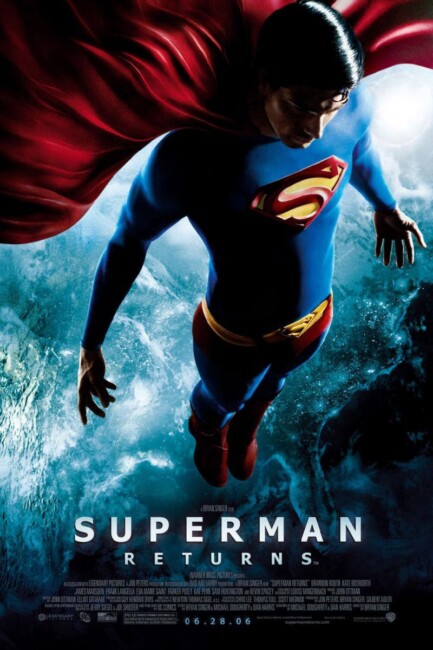USA. 2006.
Crew
Director – Bryan Singer, Screenplay – Michael Dougherty & Dan Harris, Story – Michael Dougherty, Dan Harris & Bryan Singer, Producers – Gilbert Adler, Jon Peters & Bryan Singer, Cinematography – Newton Thomas Sigel, Music – John Ottman, Visual Effects Supervisor – Mark Stetson, Visual Effects – Eden FX, Framestore-CFC (Supervisor – Jon Thum), Frantic Films (Supervisor – Chris Bond), The Orphanage Inc, Photon VFX, Rhythm and Hues (Supervisor – Derek T. Spears), Rising Sun Pictures, Sony Pictures Imageworks (Supervisor – Richard R. Hoover), Special Effects Supervisors – Neil Corbould & Dave Young, Production Design – Guy Hendrix Dyas. Production Company – Warner Brothers/Legendary Pictures/DC Comics/Jon Peters/Bad Hat Harry Productions.
Cast
Brandon Routh (Superman/Clark Kent), Kevin Spacey (Lex Luthor), Kate Bosworth (Lois Lane), James Marsden (Richard White), Tristan Lake Leabu (Jason White), Parker Posey (Kitty Kowalski), Sam Huntington (Jimmy Olsen), Frank Langella (Perry White), Eve Marie Saint (Martha Kent), Kal Penn (Stanford), David Fabrizio (Brutus), Noel Neill (Gertrude Vanderworth), Marlon Brando (Jor-el)
Plot
Superman returns to Earth after a five-year absence, during which time he has travelled to find the remains of Krypton. Returning to The Daily Planet as Clark Kent, he discovers that Lois Lane has moved on into a relationship with Perry White’s nephew Richard and now has a young son. In adjusting to this, Superman begins to realise the depth of his feelings for Lois. At the same time, Lex Luthor, acquitted from jail and having swindled an old dowager out of her money, has mounted an expedition to the Arctic to find the Fortress of Solitude. From there, Luthor steals several of the crystals left by Superman’s father and begins to discover the lost Kryptonian secrets of crystalline technology. He devises an outrageous plan to build an entire crystalline landmass on the seabed next to where Metropolis lies, something that will swamp the American continent. To counter Superman, Luthor mixes the crystals with Kryptonite.
With Superman Returns, The Man of Steel enjoyed his 68th birthday. From his origin in Action Comics #1 in 1938 until the present, Superman has gone from a comic-book character – indeed, the template for all modern superheroes – to a cultural icon. Superman has appeared in numerous media incarnations, beginning with a series of 16 animated cartoons from Fleischer Studios between 1941 and 1943; two serials – Superman (1948) and Atom Man vs. Superman (1950) with Kirk Alyn; a film Superman and the Mole-Men (1951) and a tv series Adventures of Superman (1952-8) starring George Reeves; even a Broadway musical It’s a Bird, It’s a Plane, It’s Superman (1966), a series of American Express commercials alongside Jerry Seinfeld and a classical symphony with Michael Daugherty’s Metropolis Symphony (1988).
Superman’s finest screen incarnation came during the 1970s with the duo of films that were shot back-to-back by producers Alexander and Ilya Salkind – Superman (1978) and Superman II (1980) starring Christopher Reeve. The production of Superman‘s I and II were notoriously problem ridden, littered with lawsuits and the fallout over the Salkinds’ firing of director Richard Donner. Largely, it seems the Superman films were a creative tug of war between Richard Donner who treated the comic-book seriously and the Salkinds who wanted to create something campy and unserious a la tv’s Batman (1966-8). After Richard Donner’s departure, the Salkind series went badly downhill with the likes of Superman III (1983), Supergirl (1984) and tv’s Superboy (1988-91). The Salkinds’ then sold the Superman rights to producers Menahem Golan and Yoram Globus who retained Christopher Reeve to make the impoverished Superman IV: The Quest for Peace (1987), which flopped so badly it killed the Superman film series off.
Certainly, much has happened to the DC Superman in the nearly two decades since the Christopher Reeve films. Despite the success of the Superman films around this time, DC Comics seemed to go into a tailspin about what to do with Superman on the printed page from 1980s onwards. Not long after the film series, DC published Crisis on Infinite Earths (1985-6) as part of an effort to reconcile their superheroes into a more streamlined universe continuity-wise wherein they killed off Superboy, Supergirl and the Golden Age version of Superman who lived on Earth II. Immediately after Crisis of Infinite Earths, DC launched The Man of Steel (1986) by John Byrne, a limited-run series that reinvented the Superman franchise, making Superman a test tube baby that was born on Earth and less aware of his Kryptonian origin; limited his superpowers (a plot point that had always been a sticking point for writers – how do you create dramatic tension when your character has godlike abilities?); had Lois Lane aware of his secret identity; and reinvented Lex Luthor as the evil plutocrat he had become in the films rather than the mad scientist he had been in The Silver Age Superman stories. Superman still continued to suffer from waning sales and so DC created The Death of Superman (1992-3) wherein Superman was killed by the intergalactic supervillain Doomsday. Of course, Superman’s death did not last long – he was immediately superseded by four pretenders running around and inevitably resurrected. DC next reworked Superman’s origins in Superman: Birthright (2004), which took the comic-book back to its classical origins, while bringing back Superboy in an effort to tie the comic-books in with the Smallville (2001-11) tv series.
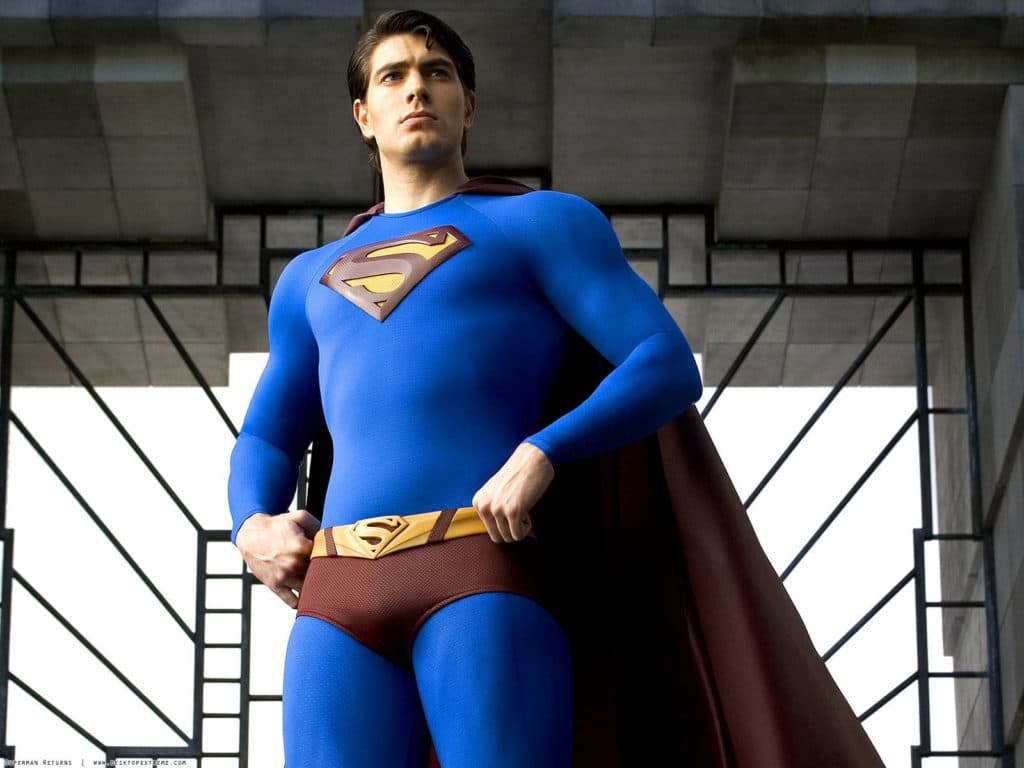
None of this seemed to affect Superman on the small screen where he enjoyed a number of incarnations – in the popular tv series Lois and Clark: The New Adventures of Superman (1993-7) where the emphasis was on the Lois-Clark-Superman love triangle; the excellent Superman animated series (1996-2000) and several spinoff films Superman: The Last Son of Krypton (1996) and Superman: Brainiac Attacks (2006) and the DC Universe Original Animated Movies Superman: Doomsday (2007), Superman/Batman: Public Enemies (2009), Superman & Batman: Apocalypse (2010), All-Star Superman (2011), Superman vs. The Elite (2012), Superman Unbound (2013), The Death of Superman (2018) and Reign of the Supermen (2019) and as a supporting character in the tv series Justice League/Justice League Unlimited (2001-5) and the films Justice League: Doom (2012), Batman: The Dark Knight Returns Part II (2013), Justice League: The Flashpoint Paradox (2013), Justice League: War (2014), Justice League: Throne of Atlantis (2015), Justice League: Gods and Monsters (2015), Justice League vs Teen Titans (2016), Justice League Dark (2017), Justice League vs The Fatal Five (2019), Justice League Dark: Apokolips War (2020), Justice League: Warworld (2023), Justice League: Crisis on Infinite Earths Part One (2024), Justice League: Crisis on Infinite Earths Part Two (2024) and Justice League: Crisis on Infinite Earths Part Three (2024); and in Smallville (2001-11) concerning Superman’s teen years.
For the greater part of the 1990s, there were a number of rumours of a Superman movie revival. Kevin Smith, director of Clerks. (1994) and Dogma (1999) and himself a comic-book author, came up with a script based on The Death of Superman. This version was to be produced by Jon Peters who had also produced Tim Burton’s highly successful adaptation of DC’s Batman (1989). According to Kevin Smith, Jon Peters purportedly twisted the story so as to add lots of gadgets and devices after seeing the money he had made on Batman toy ancillaries, as well as tried to turn Superman into another angst-ridden superhero along the lines of the movie Batman. Between 1994 and 1997, Tim Burton was attached to a project called variously Superman Lives or Superman Reborn, which would have featured the eyebrow-raising notion of Nicolas Cage cast as Superman, which eventually had the plug pulled by Warner Brothers over spiralling costs. A full account of this can be found in the documentary The Death of “Superman Lives”: What Happened? (2015).
There was a script by Jonathan Lemkin of The Devil’s Advocate (1997), Lethal Weapon 4 (1998) and Red Planet (2000), which killed Superman off and then had Lois Lane giving birth to a new child that becomes Superman reborn. Burton commissioned other scripts from William Wisher, Dan Gilroy and then J.J. Abrams, creator of tv’s Alias (2001-6) and Lost (2004-10) and director of Star Trek (2009), who came up with a script that reinvented and retold the Superman legend and had Lex Luthor possessed by the mind of a Kryptonian super-villain.
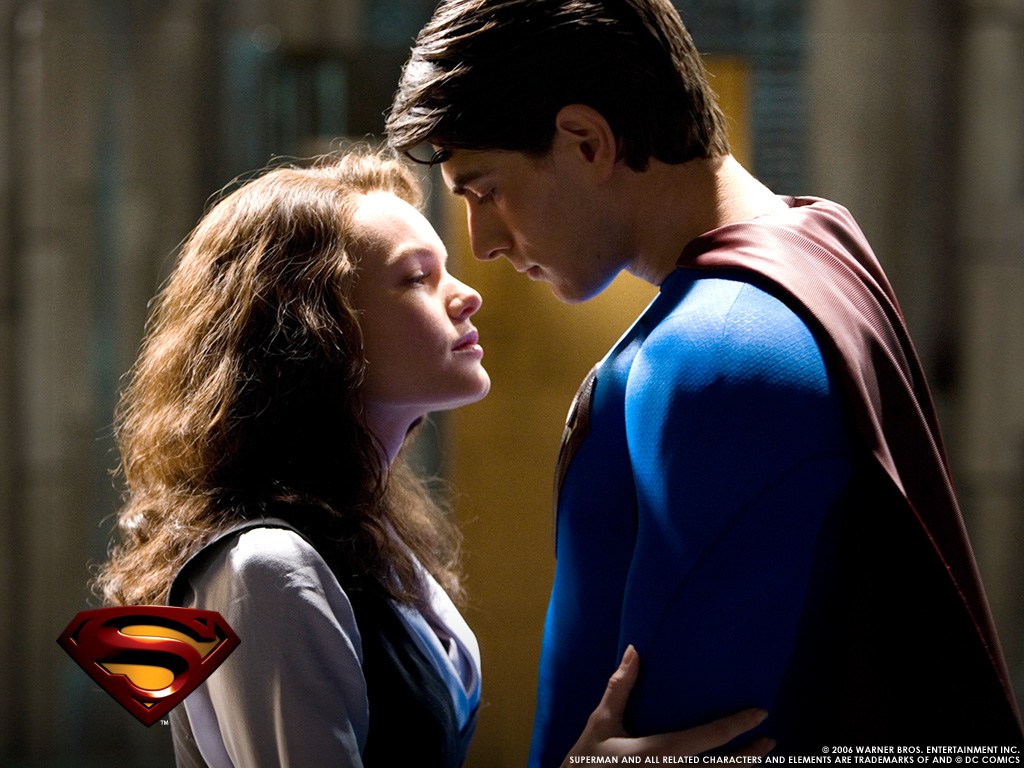
After Tim Burton left, Oliver Stone was rumoured for a time to be considered as director. Next to step up to the director’s chair was Brett Ratner, who had made Rush Hour (1998) and sequel, Red Dragon (2002) and subsequently took on another superheroic property to controversial regard with X-Men: The Last Stand (2006). Ratner reportedly left after a failure to find an actor to fill the cape. Other directors such as Michael Bay and Robert Rodriguez were considered. In 2001, there was the dreadful notion of McG, the empty-headed style-heavy director of Charlie’s Angels (2000) and sequel, assigned to the project. The project thankfully fell through when McG disagreed with Warners’ desire to shoot in Australia (to keep the budget down) reportedly because he hated flying. Throughout the various incarnations of the project, numerous names were touted as Superman including Jason Behr, David Boreanaz, Topher Grace, Jake Gyllenhaal, Josh Hartnett, Jerry O’Connell, Ian Somerhalder, Paul Walker, and disastrous notions like Brendan Fraser or Ashton Kutcher, as well as Lara Flynn Boyle, Elisha Cuthbert, Claire Danes, Scarlett Johansson and Keira Knightley mentioned as Lois Lane. Some of the more bizarre pieces of considered casting included the idea of Johnny Depp as Jor-el and Justin Timberlake as Jimmy Olsen.
The director who finally emerged to take on Superman Returns was Bryan Singer. Bryan Singer first emerged to considerable acclaim with his debut feature, the thriller The Usual Suspects (1995), which was followed by the Stephen King adaptation Apt Pupil (1998). Of course, what propelled Singer to success was his dazzling adaptation of Marvel Comics’ X-Men (2000) and its sequel X2 (2003). The X-Men films showed Bryan Singer as a director with a dynamic grasp of superheroics. X-Men also heralded a major new revival of screen superheroics in the 00s and was followed by numerous other Marvel Comics screen adaptations. Oddly though, DC Comics have been slow to capitalize on the renewed interest in comic-book superhero adaptations – up until Christopher Nolan’s wonderfully exciting reinvention of the Batman franchise with Batman Begins (2005) and The Dark Knight (2008), the only other DC-based film of the 00s has seen Constantine (2005). There have been various adaptations of Wonder Woman, The Flash, Justice League, Shazam and Green Arrow in the planning stage throughout the entire decade with none any the nearer to a production slate as it turns 2010 with the exception of the disaster of Jonah Hex (2010). This did improve somewhat in the 2010s with the likes of Green Lantern (2011) and the live-action DC tv series Arrow (2012-20), Gotham (2014-9), The Flash (2014-22), Supergirl (2015-21), Krypton (2018-9), Titans (2018-23) and Batwoman (2019– ).
Bryan Singer was a wonderful of choices for directing Superman Returns and the film emerges triumphally in his hands. What strikes about Superman Returns is how reverentially Singer treats the original Salkind-Christopher Reeve films. Rather than reinvent the franchise from scratch as most other revivals seemed intent on doing, Superman Returns has been construed as a work that continues on directly from Superman II, forgetting that Superman‘s III and IV ever happened. (The plot about Lois/Superman’s son impliedly takes up from their love tryst that happened in Superman II). The degree of faithfulness is amazing. The beautiful crystalline sets for Krypton and the Fortress of Solitude have been exactingly rebuilt. John Ottman’s score is a reworking of the themes from John Williams’s scores from the original films. Singer replicates the credits sequences from the original films with the names of the cast and crew appearing in trails of lights out of perspective against a starfield. Singer has even gone to the extent of using filmed footage of the late Marlon Brando who played Superman’s father Jor-el in the first film. Singer also packs the film with cameos from people from other versions of the Superman legend, including Noel Neill who played Lois Lane in the 1950s George Reeves tv series and here is the aging dowager that Lex Luthor swindles, and Jack Larson who was Jimmy Olsen in the 1950s tv series and plays the barman that serves Clark and this film’s Jimmy when they go for a drink.
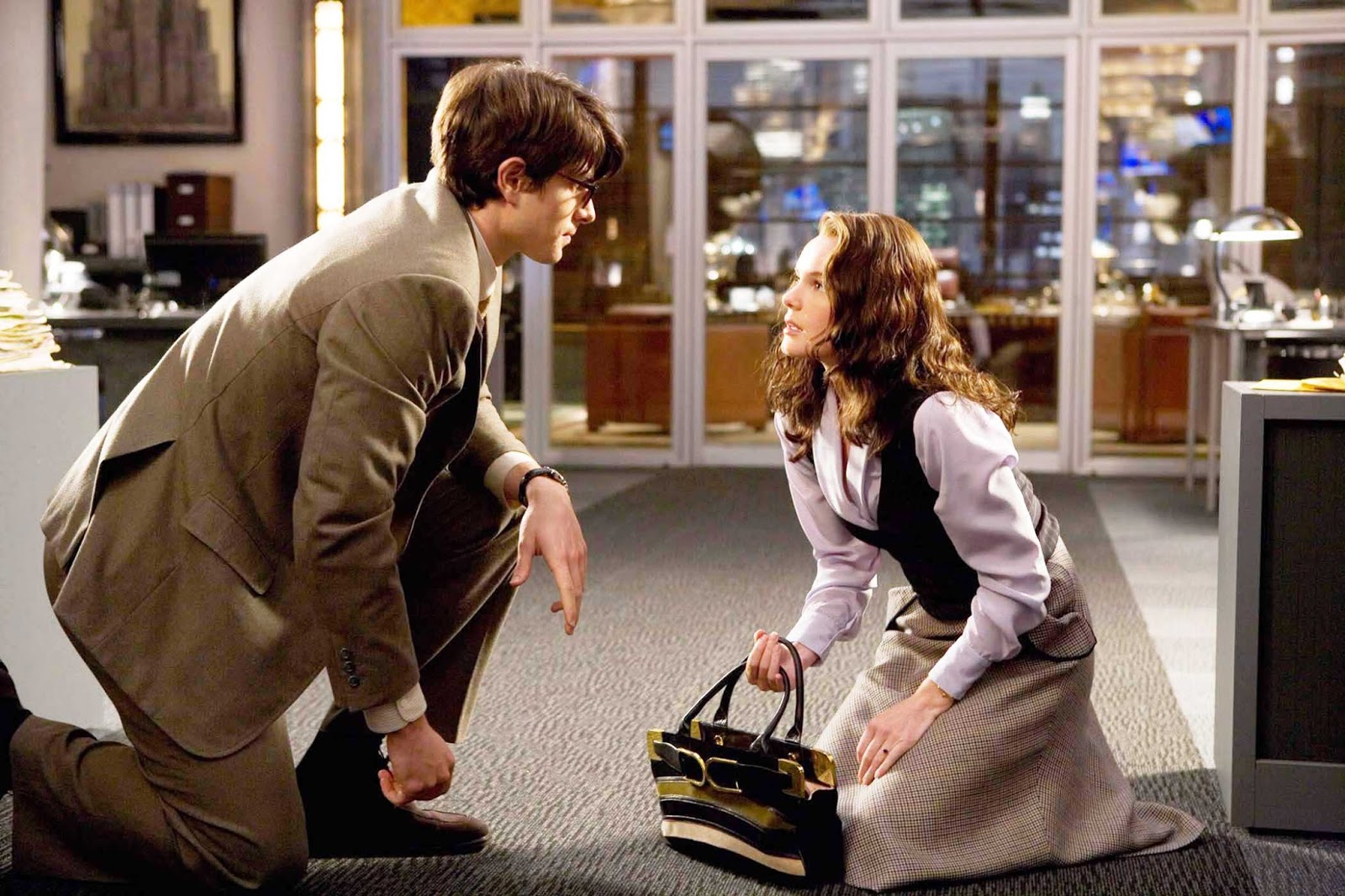
DC Comics’ two main superheroes – Superman and Batman – have trodden similar cinematic arcs. Both of the film series created two landmark works apiece – Superman and Superman II, Batman and Batman Returns (1992) – but then befell directors who woefully misunderstood the original vision and created disastrous campy parodies that played the material down to an infantile level – Superman III and Supergirl, Batman Forever (1995) and Batman & Robin (1997). Both film series then went through a period of internal soul searching and numerous failed attempts to revive the franchise before new cinematic revivals with Batman Begins and Superman Returns, each within a year of the other. Moreover, both of these revivals are directed and written by clear fans of the original comic books who treat the material with utmost respect. Indeed, these revivals of the franchises both serve to refine the visions of the original films with much more subtle regard.
Superman Returns is the best of Bryan Singer’s superhero films to date. Singer dives into the soul of Superman and manages to find a tenderness and strength. There is a loveliness in the scenes with Superman hovering outside Lois’s house looking in; where Brandon Routh hangs in orbit listening to the voices of the whole world beneath him; or when he returns to see his son at the end where Singer adds the poignant touch of him echoing Marlon Brando’s words of wisdom, which brings the notion of parents and children growing up that runs through the first film and this to a beautiful full circle. The flight with Lois from the roof of the Daily Planet also has something magical to it.
Of course, one of Bryan Singer’s virtues is constructing dynamic and amazing superheroic action scenes and the ones he stages here are breathtaking – Superman’s severing of the space shuttle from the airliner and the rescue of the plane as it starts coming apart to bring it gently down by its nose in a baseball stadium [a sequence that has been virtually recreated in live-action from the animated Superman: The Last Son of Krypton (1996)]; racing out in front of a line of machine-gun bullets as they emerge from the gun to let them effortlessly bounce off his chest, even harmlessly impact against his eyeball; his mopping up the mass devastation as the earthquakes hits Metropolis, melting shards of shattered glass from skyscraper windows with his heat vision as he flies past, before catching the falling Daily Planet globe on his back and bringing it to a landing on the street; and the majestic climax where he lifts the artificial landmass from the ocean floor on his back and throws it into orbit, before the single breathless scene where he falls unconscious all the way down from orbit.
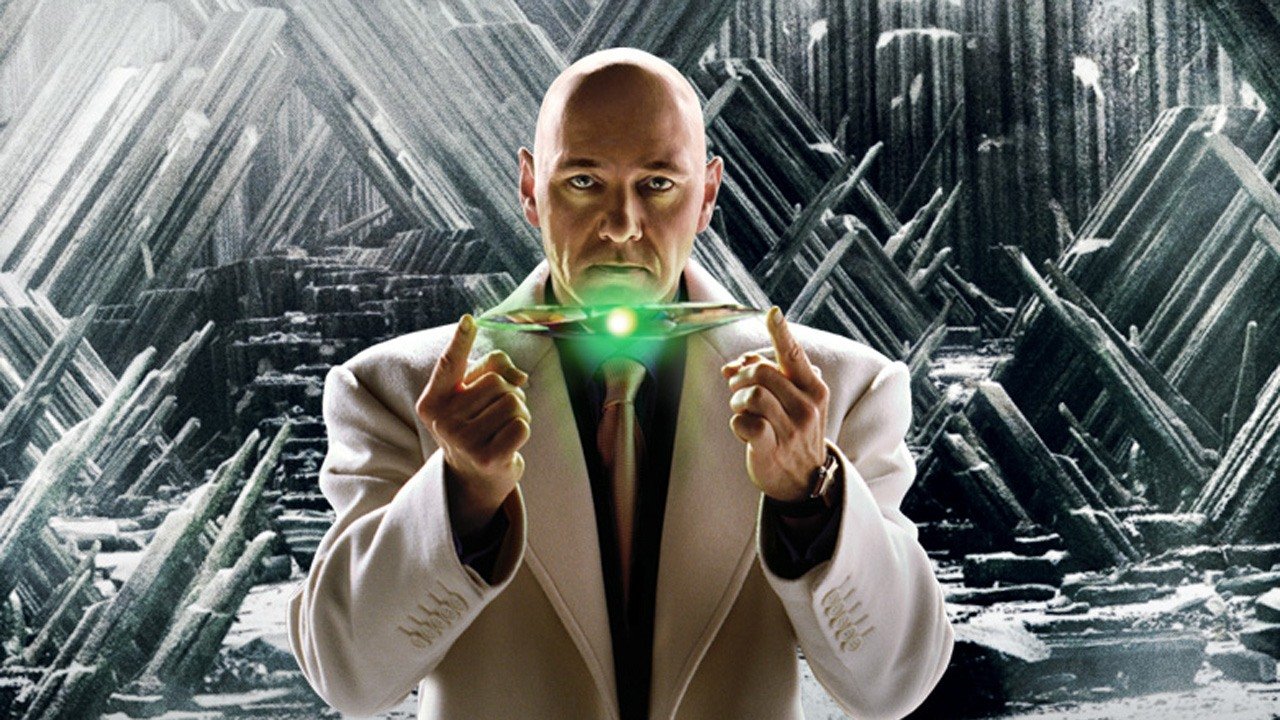
With the casting of 27 year-old Brandon Routh, who had only previously appeared in half-a-dozen episodes of various tv series, the producers were clearly hoping to achieve something akin to what Richard Donner and the Salkinds did in Superman – in turning a complete unknown (Christopher Reeve) into a major new star. Brandon Routh fulfils all that is required of him with abundance. He has an impeccable handsomeness and suggests a larger-than-life heroism when he steps into the costume. Equally, he balances this out with Clark’s klutziness and a wonderful sensitivity during the tender scenes. Kate Bosworth makes a perky Lois Lane, although seems a little too subdued in comparison to Margot Kidder’s ditzy incarnation of the role (which she is meant to be carrying on from after all), or Teri Hatcher’s oddly appealing and vulnerable Lois on Lois and Clark.
The show stealer manages to be Kevin Spacey, who also came to A-list attention after appearing in Bryan Singer’s first film The Usual Suspects (and had also been touted as Luthor as long ago as Superman Lives). Unlike, Gene Hackman in Superman‘s I, II and IV, Kevin Spacey is not afraid to shave his head and gives us a bald Luthor the way Lex Luthor should be. Spacey chews the scenery with immensely entertaining regard and emerges as the best screen incarnation of Luthor to date. Happily, Bryan Singer ditches the campy aspects surrounding Luthor that came through in the original films – he does get a moll who does invariably fall to Superman’s charms but there are no bumbling buffoon sidekicks, although Luthor is still involved in outrageous real estate schemes and plans to destroy substantial parts of the American continent.
The sets – from Luthor’s opulent libraries and shipboard rooms to his elaborate model train railways, and of course the reconstructions of the crystalline Kryptonian architecture – are dazzling. Indeed, Superman Returns is a welcome reward that is far better than possibly expected to those of us who waited all the way from the end of the Christopher Reeve series and through the various cringe-inducing plans to revive The Man of Steel during the 1990s. The greatest shame is that such a fine film met with mixed box-office and critical reception.
2006 was suddenly a year that seemed alive with new screen Superman works. Aside from Superman Returns, there was also Hollywoodland (2006) about the true life death of 1950s tv Superman George Reeves; and Superman II: The Richard Donner Cut (2006), which finally released a pieced-together version of Richard Donner’s original vision for Superman II.
Superman Returns was spoofed in Epic Movie (2007).
Bryan Singer next went onto make the Tom Cruise vehicle Valkyrie (2008) about the true-life plot to assassinate Hitler and the fairytale adventure Jack the Giant Slayer (2013). before returning to the X-Men franchise with X-Men: Days of Future Past (2014) and X-Men: Apocalypse (2016), and going on to the Queen biopic Bohemian Rhapsody (2018). Singer has also executive produced the tv mini-series The Triangle (2005) about the Bermuda Triangle, the horror anthology Trick ‘R Treat (2008), X: First Class (2011), the horror films My Eleventh (2014) and The Taking (2014), and the tv series Legion (2017-9) and The Gifted (2017-9). Brandon Routh later went onto play another DC Comics superhero Ray Palmer/The Atom in episodes of Arrow (2012-20) and The Flash (2014-22) and became a regular in the series Legends of Tomorrow (2016-22).
Other Superman appearances on screen are:-
- seventeen Superman animated shorts produced by Fleischer Studios between 1941 and 1943
- two serials made during the 1940s, Superman (1948) and Atom Man vs. Superman (1950) both starring Kirk Alyn
- the low-budget feature film Superman and the Mole-Men (1951), which became the basis of the long-running tv series Adventures of Superman (1952-8) starring George Reeves
- It’s a Bird … It’s a Plane … It’s Superman (1975), a tv movie adapted from a Superman Broadway musical starring David Wilson
- the big-budget film Superman (1978) starring Christopher Reeve, which led to three sequels with Superman II (1980), Superman III (1983) and the cheap Superman IV: The Quest for Peace (1987) from Cannon Films, as well as spinoffs like Supergirl (1984) starring Helen Slater and tv’s Superboy (1988-91) starring Gerard Christopher. Also of interest here is Superman II: The Richard Donner Cut (2006), Richard Donner’s edit of his original intended vision of Superman II, which had been subject to much in-fighting with the producers
- Lois and Clark: The New Adventures of Superman (1993-7), a popular tv series that focused more on the love triangle relationship between Clark/Superman (Dean Cain) and Lois Lane (Teri Hatcher)
- the excellent animated series Superman (1996-2000) where the superheroic exploits were rendered in a beautifully stylised Art Deco milieu, which led to several spinoff films with Superman: The Last Son of Krypton (1996), The Batman Superman Movie: World’s Finest (1998) and Superman: Brainiac Attacks (2006), while Superman also appears as one of line-up of DC superheroes in the same creative team’s Justice League/Justice League Unlimited (2001-6)
- The DC Universe Original Animated Films:- Superman: Doomsday (2007), Superman/Batman: Public Enemies (2009), Superman & Batman: Apocalypse (2010), All-Star Superman (2011), Superman vs. The Elite (2012), Superman Unbound (2013), The Death of Superman (2018), Reign of the Supermen (2019), Superman: Man of Tomorrow (2020), Superman: Red Son (2020) and Batman and Superman: Battle of the Super Sons (2022), while Superman also appears in Justice League: The New Frontier (2008), Justice League: Crisis on Two Earths (2010), Justice League: Doom (2012), Batman: The Dark Knight Returns Part II (2013), Justice League: The Flashpoint Paradox (2013), Justice League: War (2014), Justice League: Throne of Atlantis (2015), Justice League: Gods and Monsters (2015), Justice League vs Teen Titans (2016), Justice League Dark (2017), Justice League vs The Fatal Five (2019), Justice League Dark: Apokolips War (2020), Injustice (2021), Justice Society: World War II (2021), Justice League: Warworld (2023), Legion of Super-Heroes (2023), Justice League: Crisis on Infinite Earths Part One (2024), Justice League: Crisis on Infinite Earths Part Two (2024) and Justice League: Crisis on Infinite Earths Part Three (2024)
- the tv series Smallville (2001-11) played by Tom Welling, which concerns Superman’s teen years
- Superman: Requiem (2011), a feature-length fan film starring Martin Richardson that was sanctioned by Warner Brothers
- Zack Snyder’s reboot Man of Steel (2013) starring Henry Cavill and its follow-ups, the DC superhero team-ups Batman V Superman: Dawn of Justice (2016) and Justice League (2017) and the extended cut of the latter with Zack Snyder’s Justice League (2021), while Cavill also makes a cameo in the end credits of Black Adam (2022)
- the tv series Supergirl (2015-21) starring Melissa Benoist with appearances from Tyler Hoechlin as Superman who was later given his own series with Superman and Lois (2021-4)
- the prequel tv series Krypton (2018-9) concerning Superman’s grandfather before the destruction of Krypton
- the animated tv series My Adventures with Superman (2023- )
- Superman also turns up as an animated character in Legion of Superheroes (2006-8), The Lego Movie (2014), The Lego Batman Movie (2017), Teen Titans Go! To the Movies (2018), The Lego Movie 2 (2019) and DC League of Super Pets (2022), while the animated series Young Justice (2010-3) features Superboy, a clone of Superman, as a regular character
- Also of interest is The Death of “Superman Lives”: What Happened? (2015), a documentary about the aborted Tim Burton-Nicolas Cage Superman film of the late 1990s, and the South Korean A Man Who Was Superman (2008) about a man who believes he is Superman.
(Winner in this site’s Top 10 Films of 2006 list. Winner for Best Actor (Brandon Routh), Best Supporting Actor (Kevin Spacey) and Best Special Effects. Nominee for Best Director (Bryan Singer), Best Supporting Actress (Parker Posey) and Best Production Design at this site’s Best of 2006 Awards).
Trailer here


